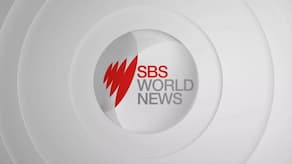Many of us will fondly remember books from our childhood – and can recall memories of bedtime stories and their quirky characters.
But children’s books can also be an important tool for celebrating diversity and creating inclusion in the classroom.
At Colyton Public School in Western Sydney, the majority of the students come from culturally and linguistically diverse (CALD) backgrounds, so teachers try to make sure the books on their shelves reflect lived experiences.
“I really try to think about characters in books that could relate to them, and also expose them to other experiences of children from different backgrounds,” Year 1 teacher Jessica Palmer told SBS News.
“It makes students well aware of different cultures, and makes the class more inclusive and understanding as well.”
A new database designed by the National Centre for Australian Children’s Literacy (NCACL) hopes to make it easier for teachers, parents, and readers to find books which celebrate diversity.
Users can search for key concepts in the database, including cultural identity, traditions, migration, and language.
“It’s important to be able to relate to a book … if you’re not going to relate to it in some way, chances are, you’re not going to want to read,” Professor Belle Alderman who directs the NCACL said.
Maxine Beneba Clarke is a children’s book author of Afro-Caribbean descent. She said she grew up in a time where there were very few children’s books with characters who looked like her.
“It’s really important for all children to understand their stories are important, and they themselves are important.”
Research has indicated diversity in children’s books correlates with improved literacy outcomes – that’s because when children see themselves in books, they find reading more enjoyable.
“If you see a character and you can say, 'I know exactly how they feel, I would feel that way, I would say those things', you want to read,” Professor Alderman said.
“There is that link between wanting to read, and seeing yourself in books.”
Even though they are only in Year 1, the children can already recognise why diversity in books is important.
“I like how it is close to me, and it is me,” James said.
Seven-year-old Abdullah said he enjoys reading books with relatable characters.
“It might have been that they may have seen someone who looks similar to me, and added them in the books.”
Recent research by Edith Cowan University found 95 per cent of the children’s books in daycare centres featured a Caucasian main character – and many of the books which did include CALD characters did not portray them as part of contemporary society.
It's for that reason the push for more diverse books isn't just about characters - but also, diverse voices telling those stories, and being in control of their own narratives.
“That was my impetus; what kind of books did I want my kids to be reading? What kind of books did I need when I was growing up, that I didn’t actually have,” Ms Clarke said.
The database will be free to access and launches in 2019.


